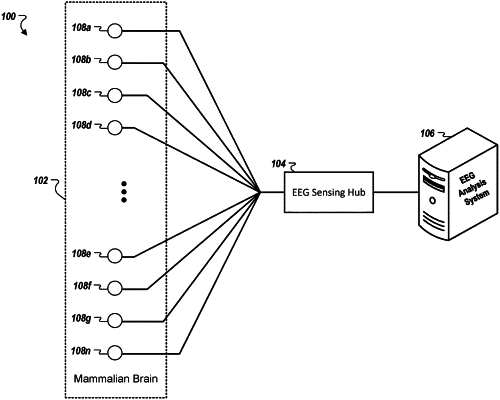| CPC A61B 5/369 (2021.01) [A61B 5/076 (2013.01); A61B 5/4094 (2013.01); A61B 5/725 (2013.01)] | 19 Claims |

|
1. A computer-implemented method, comprising:
obtaining, by a computing system, and for each of a plurality of sensor channels, a respective set of electroencephalogram (EEG) data for the sensor channel over a first interictal time interval, each sensor channel corresponding to a different one of a plurality of EEG sensors disposed at different locations of a brain of a mammal;
segmenting, by the computing system, and for each of the plurality of sensor channels, the respective set of EEG data for the sensor channel into a plurality of EEG data segments, each EEG data segment corresponding to one of a plurality of sub-intervals of the first interictal time interval;
for each sensor channel of the plurality of sensor channels and each of the plurality of sub-intervals:
(a) generating, based on analysis of the EEG data segment for the sub-interval, a current classification of the sensor channel at the sub-interval as either (i) a non-epileptogenic sensor channel for an EEG sensor that is likely not disposed at or near an epileptogenic region of the brain, or (ii) an epileptogenic sensor channel for an EEG sensor that is likely disposed at or near an epileptogenic region of the brain; and
(b) using the current classification of the sensor channel at the sub-interval to update a Bayesian metric for the sensor channel, the Bayesian metric determined based on the current classification of the sensor channel at the sub-interval and classifications of the sensor channel from any preceding sub-intervals in the first interictal time interval, the Bayesian metric indicating a long-term classification of the sensor channel expressed as a cumulative belief that the sensor channel is either a non-epileptogenic sensor channel or an epileptogenic sensor channel; and
providing, by the computing system, and for each of one or more of the plurality of sensor channels based on the Bayesian metric for the sensor channel, an indication of whether the sensor channel has an EEG sensor that is likely disposed at or near an epileptogenic region of the brain.
|